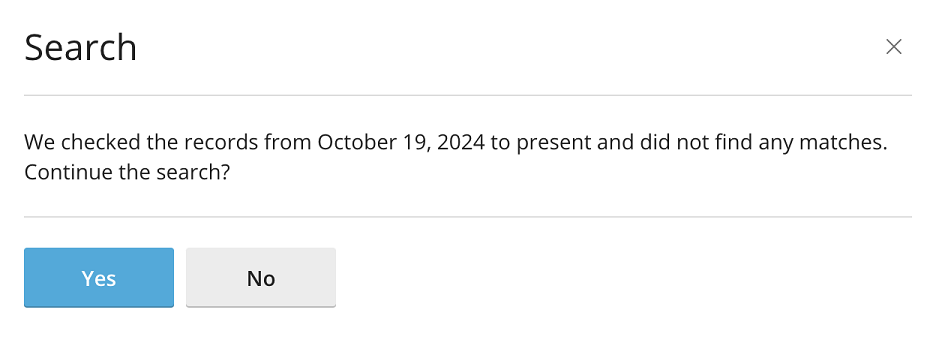監控系統和郵件伺服器日誌
概要: 通過研究服務日誌檔中的資訊,可以更容易地解決各種Plesk服務的問題。日誌流覽器擴展可以説明您通過一個介面輕鬆地查看和搜索許多不同服務的日誌。
請注意,雖然該擴展可以更容易地訪問對故障排除有用的資訊,但它不能自動修復問題或為故障排除提供額外的幫助。如果您遇到一個問題,不喜歡動手修復,請使用 plesk 修復工具 或聯繫支持。
日誌瀏覽器是一個免費的擴展,只能由Plesk管理員使用。該擴展僅在Plesk for Linux中可用。
使用日誌瀏覽器排除問題
使用日誌瀏覽器,您可以解決與郵件以及許多其他Plesk服務相關的問題(通過手動配置要查看的日誌項源)。
解決郵件相關的問題:
-
轉到 工具與設定,然後點按 日誌瀏覽器(在 「協助與故障排除」 下)。
-
轉到 「郵件」 選項卡。
-
下一步的不同取決於您是在排除過去發生的問題還是可能重現的問題:
- 如果過去發生過這個問題,請點按“選擇日期”欄位,並指定問題發生的日期和時間。您將只會看到自該日期/時間以後開始的日誌條目。您做得越準確,您需要篩選的日誌條目就越少。
- 如果該問題可能重現,請點按 即時更新 切換按鈕,以顯示“已啟用”,然後點按 清空。重現問題應該用相關的日誌條目填充清單。
-
按一下
圖示以配置篩選器。
-
在“優先順序”下,配置您要查看的郵件類型。優先順序級別範圍從0(“緊急”,最高)到7(“調試”,最低)。您可以同時選擇多個優先順序級別,但必須至少選擇一個。
備註: 在解決問題時,優先順序低於4的消息(“警告”)更有可能分散注意力,而不是提供幫助。但是,如果解決問題很困難,建議在列表中添加優先順序為7(“調試”)的消息。
-
(備選)在“源”下,選擇一個或多個服務,只查看與這些服務相關的日誌條目。預設會顯示與所有郵件服務相關的消息。
-
再次按一下
圖示以關閉篩選器。
您現在應該可以看到在指定的時間段內創建的指定服務的所有日誌條目。
解決不同服務的問題:
-
轉到 工具與設定,然後點按 日誌瀏覽器(在 「協助與故障排除」 下)。
-
Go to the 「System」 tab.
-
下一步的不同取決於您是在排除過去發生的問題還是可能重現的問題:
- 如果過去發生過這個問題,請點按“選擇日期”欄位,並指定問題發生的日期和時間。您將只會看到自該日期/時間以後開始的日誌條目。您做得越準確,您需要篩選的日誌條目就越少。
- 如果該問題可能重現,請點按 即時更新 切換按鈕,以顯示“已啟用”,然後點按 清空。重現問題應該用相關的日誌條目填充清單。
-
按一下
圖示以配置篩選器。
-
在“優先順序”下,配置您要查看的郵件類型。優先順序級別範圍從0(“緊急”,最高)到7(“調試”,最低)。您可以同時選擇多個優先順序級別,但必須至少選擇一個。
備註: 在解決問題時,優先順序低於4的消息(“警告”)更有可能分散注意力,而不是提供幫助。但是,如果解決問題很困難,建議在列表中添加優先順序為7(“調試”)的消息。
-
(可選)選擇要查看的消息的來源。預設情況下,將顯示符合日期/時間和優先順序標準的所有消息。您可以通過指定所需消息的源來縮小清單的範圍:
- 要查看來自一個或多個更廣類別(例如,“郵件系統”或“FTP守護進程”)的消息,請在“設備”下進行選擇。
- 要查看來自一個或多個指定服務的消息(例如,“nginx”或“dovecot”),請在“源”下選擇它們。
備註: 只使用“設備”或“源”,永遠不同時使用。選擇不相容的“設備”和“源”組合(例如,“郵件系統”和“nginx”)將導致出現篩選為空。
-
再次按一下
圖示以關閉篩選器。
您現在應該可以看到在指定的時間段內創建的指定服務的所有日誌條目。
Searching for Mail Log Entries
By default, when you search for log entries on the Mail tab, the log entries for the last 30 days are searched. If no entries are found, Log Browser suggests that you extend the search (see the screenshot below). Every time you extend the search, the log entries for 30 more days are searched. So, if you click Yes, the log entries for the last 60 days will be searched. If you extend the search once again, the log entries for the last 90 days will be searched, and so on.

You can also specify the date to start the search from using the calendar in the top left corner of the screen. After selecting the starting date from the calendar (for example, October 1st), the log entries for the selected date plus the next 30 days will be searched (in this example, October 1st to October 31st). Every time you continue the search, the log entries for the next 30 days are searched (in this example, November 1st to November 30th), and so on.
You can change the default value of 30 days by editing the panel.ini file.
To change the default value of the search time frame on the Log Browser Mail tab:
-
打開位於此處的用於編輯的 panel.ini文件:
- (Plesk for Linux)
/usr/local/psa/admin/conf/panel.ini - (Plesk for Windows)
%plesk_dir%admin\conf\panel.ini
您還可以使用`Panel.ini Editor <https://www.plesk.com/extensions/panel-ini-editor/>`__ 擴展在Plesk介面中編輯該檔。
- (Plesk for Linux)
-
Add lines of the following pattern to the
panel.inifile, and then save it:[ext-log-browser] mail.SearchTimePeriod = <number of time units><time unit>
For example, to change the search time frame to two weeks, add the following lines:
[ext-log-browser] mail.SearchTimePeriod = 2week
The mail.SearchTimePeriod setting takes time values that can be suffixed with the following units: year, month, week, day, hour, min. For example, 2month or 2month 1day. You can also specify a value in seconds without any suffix, for example, 5184000 (60 days in seconds).